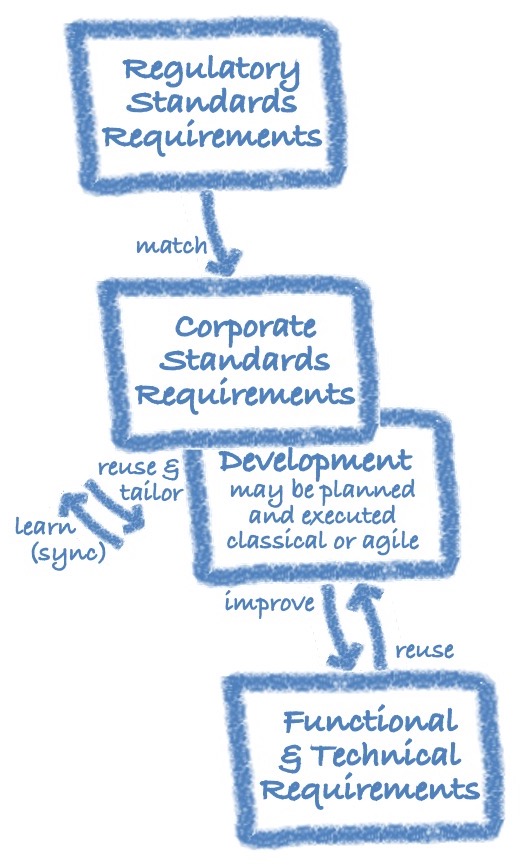Abstract
Standards and processes should be an exoskeleton that helps the teams to move safely and efficiently through the storms of the projects. Instead, often the processes grow excessively over time, e.g. because they are designed by central departments that are acting far away from the projects, only looking at the standards. Then the exoskeleton rather becomes a heavy backpack that the projects have to carry in addition to the customers' load. When your teams start considering processes being rather extra effort than help, it is time again to >listen to the projects' voice<.
Actually, standards and processes are just requirements saying "how" to do the "what" in a way of proven best practices. The latter ("what") often is given by a customer as product requirements. So why not defining the former ("how") also as what they are? Requirements, that can be reused in projects and merged with the other requirements in the same developer tool!
Defining the corporate standards as requirements that match regulatory standards and are reused in the projects, then improved by the projects and finally synchronized back to the corporate standards, looks like being a smart and intrinsic approach. This also eases >tailoring< of the processes by reusing, filtering and adapting dedicated process requirements sets.
The steps can be repeated for each phase, stage, Sprint, release, sample, feature or however the project iterations or product increments are organized. The process requirements should be prepared accordingly, and maybe also in variants, e.g. for small local or large distributed projects, or maybe for projects with or without functional safety aspects. For >agile organizations< it may help to merge process requirements into the Epics, combining "how" and "what" in the Backlog for all the "work to be done" as a holistic approach.
